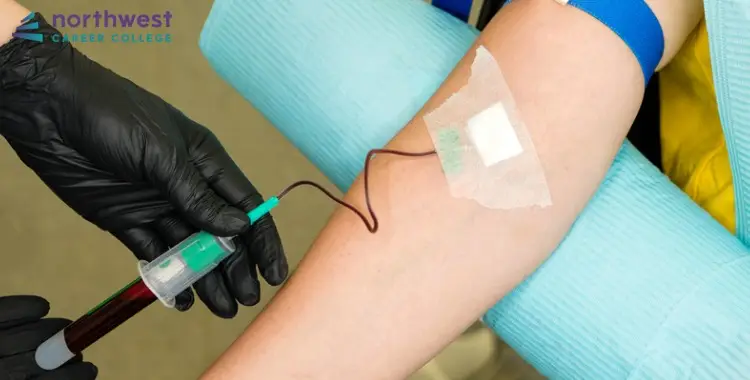Blood Tube Colors and Tests: A Short Overview for Phlebotomy Technicians
- Phlebotomy Technician
- July 18, 2024
- 2.1k views
- 3 min read

Phlebotomy technicians must understand the various blood tube colors and their corresponding tests. Each tube is color-coded to indicate the type of additive it contains, which directly affects the analysis that can be performed on the collected blood sample. Understanding these color distinctions ensures accurate test results, optimal patient care, and efficient laboratory operations. This overview is structured to provide phlebotomy technicians with a clear and concise guide to the different blood tube colors and associated tests.
Table of Contents
Red-top tubes
These tubes are mostly used for serum tests. Therefore, they are not anticoagulated, meaning they contain nothing that prevents blood from clotting. Usually, centrifugation occurs after clots are formed in the blood stored in these tubes. For instance, the red top tubes are used for blood chemistry panels, serology tests, and drug levels.
Light Blue Top Tubes
The light blue-capped evacuated tubes contain sodium citrate, which acts as an anticoagulant by chelating calcium and blocking the coagulation cascade. Light blue-top tubes are typically used in coagulation studies like PT, aPTT, and D-dimer studies. These tubes must also be filled with appropriate blood volume to achieve good results.
Green Top Tubes
The anticoagulant in sodium heparin or lithium heparin is contained within the green top tubes, thereby stopping thrombin formation. Green top tubes, including electrolyte panels, ammonia levels, and specific toxicology tests, are used in plasma testing. These are the tubes of choice if a very short turnaround of tests is warranted because the blood is used in a plasma specimen.
Lavender (Purple) Stoppered
The lavender-stoppered tubes contain EDTA (ethylenediaminetetraacetic acid), capable of binding calcium and thus acts as an anticoagulant by inhibiting coagulation. Such tubes find a broad indication for hematology investigations: complete blood count, hemoglobin A1c, blood typing, etc. They do not cause any hemolysis, keeping the shape and structure of the blood cells well maintained, which is suitable for such tests.
Gray Top Tubes
Gray top tubes contain potassium oxalate as an anticoagulant and sodium fluoride as a preservative. They are used for glucose testing and lactate levels. The sodium fluoride agent is a glycolysis inhibitor—it arrests glucose degradation by the red blood cells. Therefore, glucose measurement is central to identifying and managing diabetes.
Yellow Top Tubes
Yellow-top tubes contain a solution called acid-citrate-glucose (ACD) or sodium polyanethol sulfonate (SPS). The former is used for blood cultures and HLA typing. ACD maintains cellular and platelet viability; hence, this tube suits tissue typing and transplant compatibility testing. Lastly, SPS is used for microbiologic blood cultures to detect bacterial infection.
Dark Blue Top Tubes (Royal Blue)
Trace element testing would be collected with a dark blue top tube. If the tubes are not contaminated, the insides should be free of trace elements. Depending on the specific test, these trace element tests may have either EDTA, heparin, or nothing as the anticoagulant. Common trace metal measurements include lead, mercury, and zinc.
Conclusion
One must be able to distinguish various blood tube colors and identify what type of tests each color is for to ensure accuracy in taking blood samples in a laboratory setting. With this in mind, one of the best practices associated with phlebotomy is knowing how to handle and treat blood tubes for the exact purpose they were designed for. The more one is informed about the specific use of each tube, the more the phlebotomy technician can serve the patients better.




